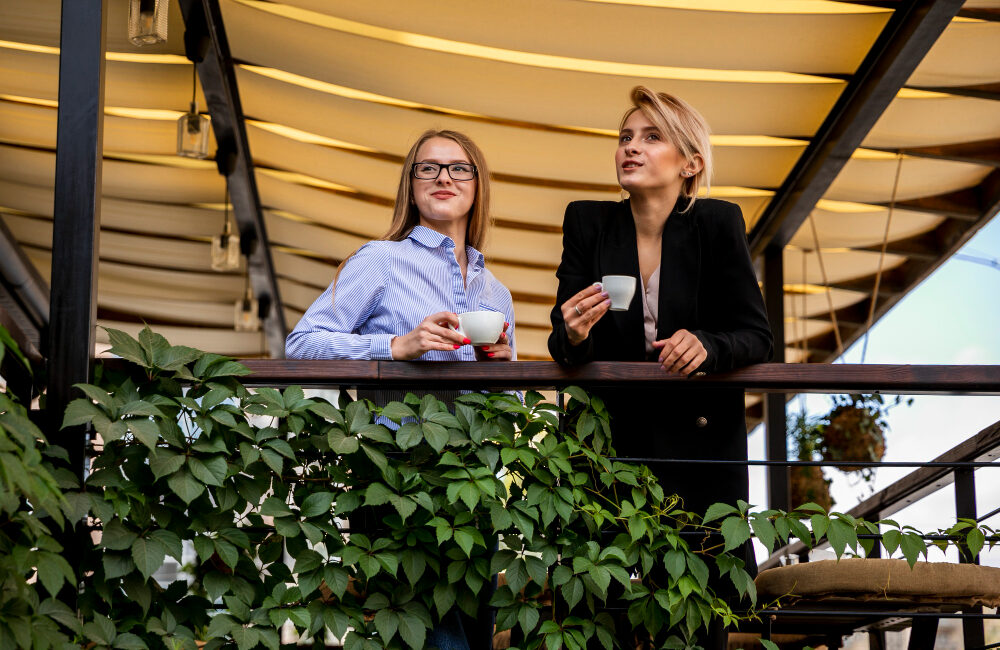With the rising environmental concern in recent times, coffee houses around the world are racing to be termed “sustainable.” From waste minimization and sourcing eco-friendly products, cafes are leading in implementing green practices. This article helps one find out how coffee shops are turning towards sustainable practices and why such adaptation is crucial not only for the environment but also for the future of the coffee industry.
1. Eco-Friendly Packaging
Trend Overview: Packaging waste has become one of the major environmental concerns for human beings; therefore, coffee shops are trying to use environmental-friendly products as an alternative.
Operational Practices:
- Biodegradable material cups: These days it’s very common practice in the current coffee industry to provide cups made of biodegradable materials such as bamboo or cornstarch.
- Reusable Containers: Encourage the customer to bring in their reusable cups and containers themselves, which will help reduce plastic disposable items.
- Compostable Straw and Utensils: Due to the replacement of plastic straw and cutlery with compostable alternatives, large-scale impacts can be gathered.
Why it matters: Eco-friendly packaging ensures fewer wastes end up in landfills and the ocean, therefore assuring a clean environment.
2. Strategies of Waste Reduction
Trend Overview: Most coffee shops are trying to reduce wastes generated due to the fact that it has to do with sustainability by using several strategies.
Key Practices:
- Recycling of Coffee Grounds: The used coffee grounds are being put into use for compost or community garden purposes.
- Food Waste Management: More and more coffee shops are partnering with local organizations in donating unsold food or using food waste as animal feed.
- Sorting of Waste: Set in place the system of separating waste, so that recyclable and compostable products will go to their correct destinations.
Why It Matters: The reasons behind it are that this will support the reduction in the ecological footprint made by these outlets, besides motivating the principle of the circular economy.
3. Sourcing Sustainable Coffee Beans
Industry Trend: Eco-friendly sourcing of coffee beans forms one of the most important aspects of eco-friendly practices in coffee outlets.
Core Practices:
- Ethical Sourcing: The partnering of suppliers in the course of seeking fair trade practices that ensure clear supply chains.
- Organic Coffee: Organic coffee is made available, grown without synthetic pesticides and fertilizers.
- Direct Trade: Direct relationships with the growers offer direct-to-grower wages and environmental grounds for farming.
Why It Matters: Sustainable sourcing supports responsible agriculture and ensures the coffee production is beneficial to the environment and the communities.
4. Energy and Water Conservation
Trend Overview: Conserving energy and water is important in reducing the footprint of a coffee shop on the environment.
Key Practices:
- Energy-Efficient Equipment: Incorporate energy-efficient machinery such as coffee brewers, grinders, and energy-efficient lighting.
- Water-Saving Fixtures: Low-flow faucets and efficient dishwashing machines will go a long way toward reducing water consumption.
- Renewable Energy: Others again shift to renewable sources of energy, such as solar and wind.
Why It Matters: This not only helps in conserving water and saving energy but also reducing the operation cost, which contributes significantly to reducing the general environmental footprint for the coffee shop.
5. Support for Local and Organic Products
Trend Overview: The support given to the local and organic products maintains the environment and contributes to the local economy.
Key Practices:
- Local Sourcing: The shop buys all types of ingredients from various local suppliers in an attempt to minimize transportation emissions and invest in regional business.
- Organic Ingredients: Using organic milk, pastries, and other products when available, such businesses support better farming for the environment.
- Community Involvement: Hosting events on location; partnering with other businesses on cross-promotional activities.
Why It Counts: Locally sourced and organic produce reduces carbon footprint through transportation alone, and further supports greener agricultural methods.
6. Create a Green Café Atmosphere
Trend Description: Sustained demand for greenery and homelike ambiance in coffee shop design.
Operational Activities:
- Sustainable Materials: Recycled material or sustainable sourced materials for furniture, flooring, and other ornaments.
- Indoor Plants: Greenery added to freshness in the atmosphere andpositively impacts air quality.
- Green Certifications: Get certifications such as LEED to be able to show one cares about sustainability.
Why It Matters: A green café environment improves the customer experience while it epitomizes coffee shops’ commitment to environmental responsibility.
7. Customer/Staff Education
Trend Overview: Education is at the helm of rendering people and practices sustainable.
Key Practices:
- Customer awareness: It educates customers on the different initiatives on sustainability that the coffee shop engages in and involves them in participation
- Training of staff: training of staff on how best to apply sustainability and reduce on waste
Community Involvement: Events and workshops on sustainability are shared with the community. - Rationale: Educating employees and customers alike creates a culture of sustainability through acceptance and fostering eco-friendly practices
Conclusion
It is the cafes, on the other hand, that have always been in the forefront when it comes to embracing sustainable practices, an avenue that is bound to continue seeing growth due to the maturity of commitment towards environmental responsibilities. From using greener packaging to waste reduction, sourcing more sustainable coffee beans to making sure resources are used more intelligently, these are the ways that are surely redefining the coffee industry. Consumers, too, can make a difference by opting for greener cafes in order to help the world be much greener, while still being able to enjoy drinks. The more shops doing this, the greater will be the effect upon the environment, and that constitutes making a way into the future of the coffee culture.

